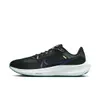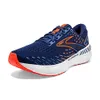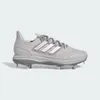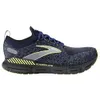
Runners, the best strength exercises can improve your running performance, regardless of whether you prefer clocking long miles or the explosive power of sprinting.
But fear not, you don’t need to spend hours in the gym building muscle on top of your running training plan. A study by the Journal of Strength and Conditioning Research shows that just two or three sessions a week are effective for strengthening and maintaining muscles, joints and bones, protecting against injury and improving performance. And even one session still has benefits.
But there are a few other things you’ll need to consider if you’re looking to build and maintain muscle mass. So before you next tie up a pair of the best running shoes, here are some reasons to add strength training to your routine and three ways to build and maintain muscle mass as a runner.
Does running build muscle?
The research has shown us that exercise (aerobic and resistance) provides stimulus for growth hormone (GH) secretion in humans. However, intensity plays a role.
It’s the big question: does running build muscle? It can, but it’s not the most effective method and you’ll need to look at the type of cardio you do. Adding resistance exercises and particular types of running to your routine, including hill training or explosive sprints, could help you build and maintain muscle mass.

Can you maintain muscle mass while running?
Absolutely. Hypertrophy training (exercising for muscle growth) can help you maintain muscle mass and prevent the breakdown of muscle tissue. And you don’t need to lift weights every day to see benefits.
If you have limited time, focus on full-body resistance sessions to maximize efficiency and prioritize compound exercises (resistance exercises that target more than one muscle group at a time like squats, lunges and push-ups). But more on that later. If spending 30-60 minutes lifting weights isn’t realistic, consider exercise snacking throughout the week instead.
Sign up to get the BEST of Tom's Guide direct to your inbox.
Get instant access to breaking news, the hottest reviews, great deals and helpful tips.
How to build muscle while running
Muscle growth occurs through muscle protein synthesis, which is the metabolic process for producing muscle protein. Muscle protein breakdown can result in muscle loss, which happens when your body can’t replenish muscle protein fast enough.
Look at it as a balancing act. The rate of synthesis versus breakdown ultimately determines whether you lose, maintain, or build muscle, so you’re either trying to balance the scales to maintain muscle mass or prioritize protein synthesis for muscle growth.
Diet and exercise are two key players in muscle-building and protein synthesis — here are a few ways to maintain and build muscle mass.
1. Manage protein intake

Protein is one of the most important macronutrients and the best foods to eat after running to build muscle. Most runners focus on carbohydrates before training to fuel energy levels, so protein makes a brilliant post-run meal.
Whether or not you count your macros, I recommend consuming high-protein meals throughout the day to help build and maintain muscle mass, plus assist with muscle recovery.
Leucine is an amino acid that initiates muscle synthesis and can be found in quality protein sources and some protein powders. The amount of protein you need to build muscle depends on how active you are, your lifestyle, your goals and factors like body weight and daily calorie intake.
As a general rule of thumb, I advise clients to consume 1-2 grams of protein per kilo of body weight. An online protein calculator can help you estimate your recommended daily intake. It’s also worth noting that the more lean muscle mass you have, the greater potential for a faster metabolism.
2. Include strength training in your routine

Whether you do home workouts with the best adjustable dumbbells, kettlebells, or resistance bands, enjoy calisthenics routines, or prefer gym time, strength training doesn’t need to be extensive.
If you can find time to pack heavy loads onto your barbells, great. But there are plenty of ways to build muscle without lifting heavier weights. Firstly, be consistent, even if it’s only one or two sessions per week, and expect to see results after several months rather than several weeks, although beginners might notice initial results quicker.
Prioritize full-body workouts or divide sessions into upper and lower body using compound exercises to hit multiple muscle groups together, several times. I would avoid the age-old “bro split” of dividing the days by muscle groups unless you can fit 5-6 solid sessions in.
Once people realize this, strength training feels more accessible. Here are the 9 best strength exercises for runners I recommend to get you started, plus my colleague (a marathoner) asked an expert for this 6-move dumbbell workout for runners.
The aim is to target the muscle groups used for running and posture, including your legs, glutes and core, but it’s important to engage your upper body, too, especially for sprinters who propel using their arms. Remember, the type of runner you are ultimately determines the strength training you choose.
3. Diversify your runs

Endurance running and steady-state training have long been associated with muscle damage or higher levels of muscle protein breakdown rather than protein synthesis, and without supplementing with other forms of muscle-building activities, may result in muscle mass loss over time.
A study published in the Journal of Sport and Health Science found that faster, shorter distances like interval training (HIIT) could be beneficial for endurance and long-distance runners when looking at performance and muscle adaptations.
One way to increase the mechanical work on your muscles is to diversify your training plan. Add several rounds of hill sprints to the end of sessions to help develop explosive power and target the back body, including your glutes, hamstrings and calves.
Use varying terrain like hills and trails, which can help stimulate different parts of your lower body and strengthen your legs and joints; this is most helpful for quad-dominant runners.
Another popular method is interval training; alternating between runs, jogs and walks (think fartlek) or moving between high and low intensity for several rounds a session. This could follow a 30-second on/ 30-second off format, Tabata-style (20/10), or you could play with distances instead for several rounds as a standalone session, warm-up, or finisher.
If you can't exercise outdoors, try using speed and incline intervals on your treadmill to play with intensity, adding several rounds to workouts.
Verdict
Fuel, consistent workouts, high-intensity training and resistance exercise programming could all contribute toward muscle maintenance and growth. You’ll also need to factor in those all-important recovery days to give muscles time to rest and repair. If resting isn't your thing, try using active recovery like a walk instead.
If you’re a strength training beginner, start with a session per week and build up, opting for days when you don’t have a run planned. Focus on medium-heavy weights that will adequately load your muscles and try different types of equipment to see what you enjoy.
If unsure, aim for roughly 3-4 sets of 8-12 reps per resistance exercise, working between a 7-8 out of 10 on intensity. The last few reps of each set of moves should feel challenging to complete. If you're cruising, you're losing.
Sprinters may focus on agility, plyometrics, heavier weights and more explosive training, so it’s important to check in with a coach (where possible) to develop a plan most relevant to your training style.
Regardless, adding strength exercises to your training should help develop better running biomechanics, posture and power output and build a more efficient and fatigue-resistant neuromuscular system.
More from Tom’s Guide
- Best running apps
- I added incline runs to my workouts for 2 weeks, here's what happened to my body
- 4 best deep core exercises for runners

Sam Hopes is a level 3 qualified trainer, level 2 reiki practitioner and senior fitness writer at Tom's Guide. She is also currently undertaking her Yoga For Athletes training course. Sam has written for various fitness brands and websites over the years and has experience across brands at Future such as Live Science, Fit&Well, Coach, and T3.
Having worked with fitness studios like F45 and Virgin Active, Sam now primarily teaches outdoor bootcamps, bodyweight, calisthenics and kettlebells. She also coaches mobility and stretching-focused classes several times a week and believes that true strength comes from a holistic approach to training your body.
Sam has completed two mixed doubles Hyrox competitions in London and the Netherlands and finished her first doubles attempt in 1:11.









